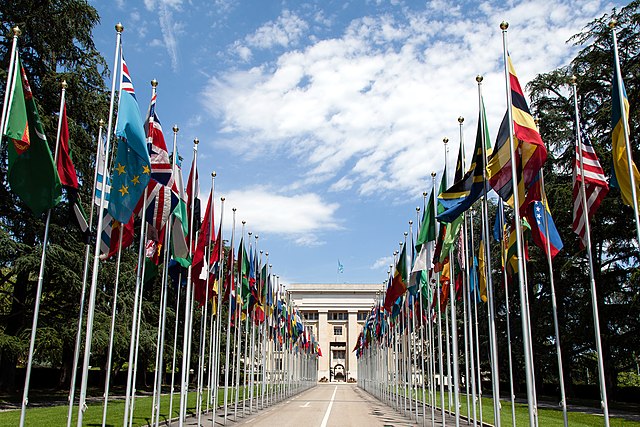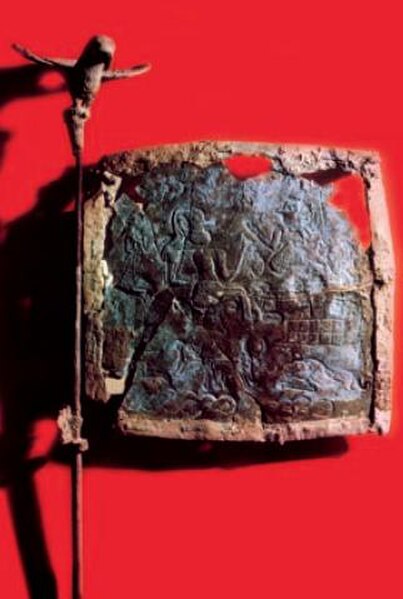An Islamic flag is the flag either representing an Islamic Caliphate, religious order, state, civil society, military force or other entity associated with Islam. Islamic flags have a distinct history due to the Islamic prescription on aniconism, making particular colours, inscriptions or symbols such as crescent-and-star popular choices. Since the time of the Islamic prophet Muhammad, flags with certain colours were associated with Islam according to the traditions. Since then, historical Caliphates, modern nation states, certain denominations as well as religious movements have adopted flags to symbolize their Islamic identity. Some secular states and ethnic or national movements also use symbols of Islamic origin as markers of heritage and identity.
A troop of spectators on horseback and with inscribed banners watching a procession. Illustration from the seventh Maqama of al-Hariri of Basra in a 13th-century manuscript created by al-Wasiti (BNF ms. arabe 5847).
An early 19th-century example of a Zulfiqar flag
An elephant with a mahout and a standard-bearer carrying a green standard with a gold sun.
Flags hung during the Mourning of Muharram, Iran.
A flag is a piece of fabric with a distinctive design and colours. It is used as a symbol, a signalling device, or for decoration. The term flag is also used to refer to the graphic design employed, and flags have evolved into a general tool for rudimentary signalling and identification, especially in environments where communication is challenging. Many flags fall into groups of similar designs called flag families. The study of flags is known as "vexillology" from the Latin vexillum, meaning "flag" or "banner".
United Nations members' national flags
Setting up a flag could also possess the meaning of conquering something. Jaan Künnap with the flag of Estonia at the top of Lenin Peak (7,134 m [23,406 feet]) in 1989.
Bronze flag Derafsh Shahdad found in Shahdad, Iran, third millennium BC
Sujagi of Eo Jae-yeon, captured in 1871








